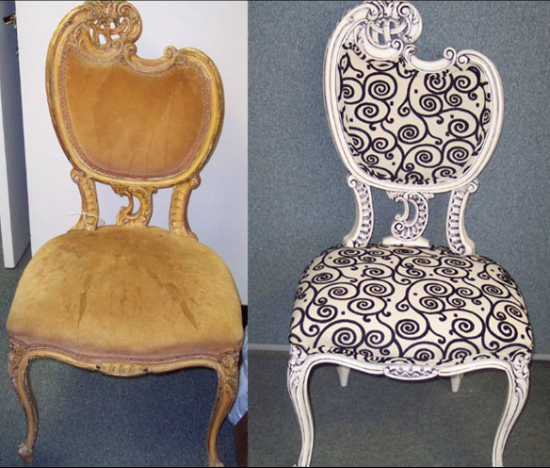Blitz News Digest
Stay updated with the latest trends and insights.
Revive and Thrive: Breathing New Life into Old Furniture
Transform your space! Discover how to breathe new life into old furniture and unlock creative tips for stunning DIY makeovers.
Top 5 DIY Techniques to Revitalize Your Antique Furniture
If you own antique furniture, you likely cherish its unique charm and history. However, over time, these pieces can become worn and lackluster. One of the best ways to restore their former glory is through DIY techniques. The first technique is to clean and condition the wood. Start by using a gentle wood cleaner to remove dirt and grime, followed by a high-quality wood conditioner to nourish the fibers. This process not only enhances the wood’s natural beauty but also prolongs its life. Next, consider reupholstering old cushions and fabrics. Fresh, vibrant fabrics can breathe new life into your antique chairs or sofas, allowing you to personalize them while maintaining their classic appeal.
Additionally, applying a new coat of paint or stain can drastically change the look of your furniture. For a more modern touch, try repainting an ornate piece in a trendy hue, or stick to a classic stain to highlight the wood’s grain. Another effective method is repairing minor damages. Fill in scratches with wood filler and use a touch-up pen to fix any blemishes. Lastly, don’t underestimate the power of creative styling. Rearranging your space or adding decorative elements can make your antique furniture stand out even more. By implementing these DIY techniques, you can ensure that your treasured pieces remain as captivating as ever for years to come.

How to Choose the Right Paint for Reviving Old Furniture
Reviving old furniture can breathe new life into cherished pieces, and choosing the right paint is crucial for achieving a flawless finish. Start by assessing the type of material you’ll be working with; different surfaces, such as wood, metal, or laminate, require specific paint formulations. For wooden furniture, consider a chalk paint or milk paint, both of which offer a matte finish and excellent adhesion. On the other hand, synthetic surfaces might benefit from a latex or enamel paint that provides durability and a glossy sheen.
Moreover, the color you choose plays a vital role in the overall aesthetic. Opt for shades that enhance your existing decor and create a harmonious environment. If you’re unsure, sample swatches can help you visualize how the paint will look in different lighting conditions. Lastly, don’t overlook the importance of finishing products; a good sealant can protect your newly painted furniture from scratches and wear, ensuring your revival project lasts for years to come.
What Are the Best Ways to Restore Wooden Furniture Without Losing Its Charm?
Restoring wooden furniture can seem like a daunting task, but with the right techniques, it is possible to enhance its natural beauty without sacrificing its charm. One of the most effective methods is to start with a thorough cleaning. Using a mild soap and water solution, carefully wipe down the surfaces to remove dirt and grime. After cleaning, allow the piece to dry completely before moving on to the next steps. If the wood has a finish that appears dull or damaged, consider applying a high-quality wood polish or wax, which can rejuvenate its appearance while maintaining the original character of the wood.
Another excellent way to restore wooden furniture is through gentle sanding. Use fine-grit sandpaper to carefully smooth out imperfections, being sure to follow the direction of the wood grain. This method not only helps remove scratches but also prepares the surface for any finishes or stains you may want to apply. If you decide to re-stain or re-finish the furniture, opt for a color that complements the natural hues of the wood, enhancing its charm without overpowering it. Always test finishes on a hidden area first to ensure the desired effect, preserving the unique personality of your wooden treasures.